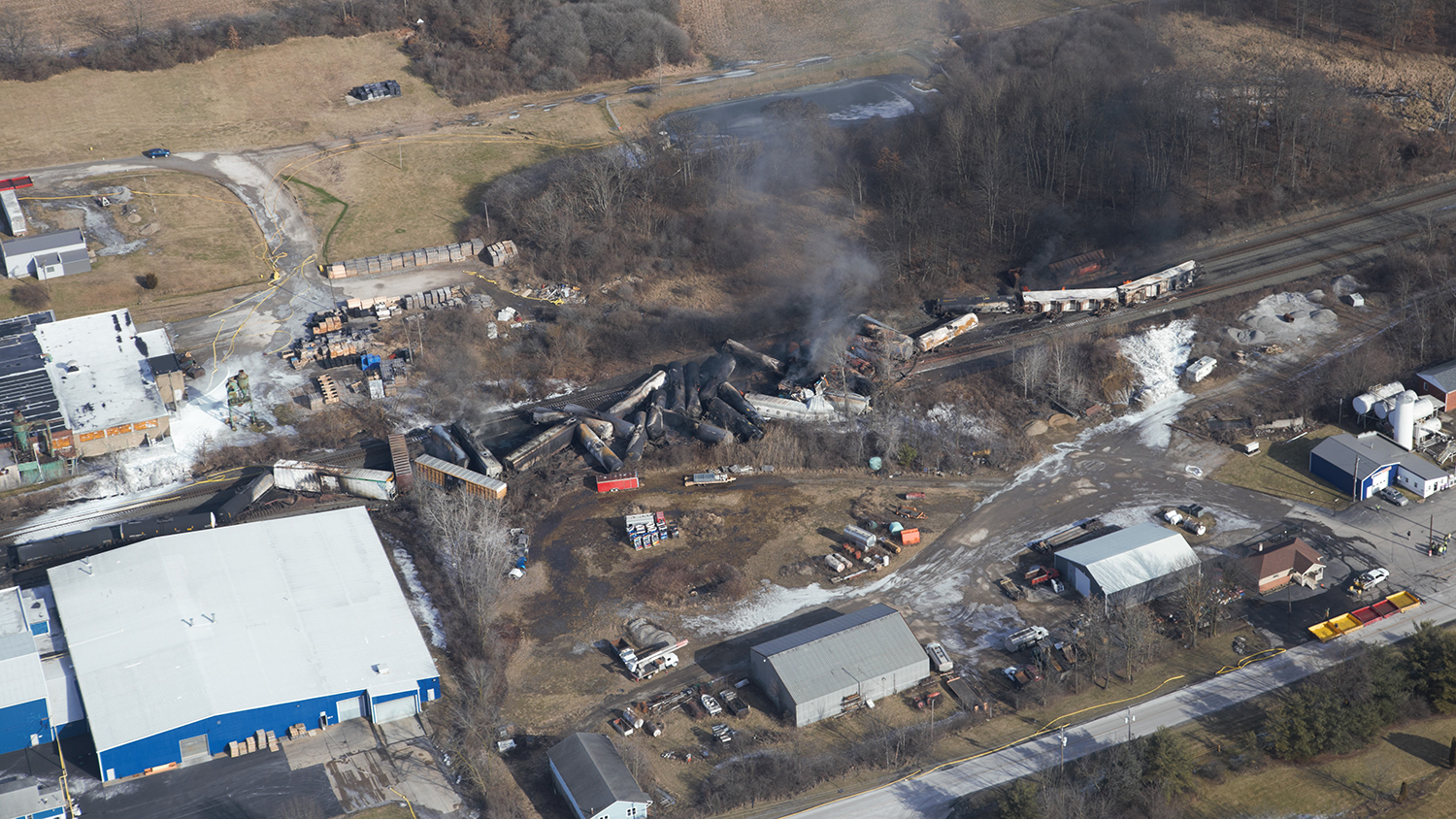After Ohio Train Derailment, Expert Warns of Potential Health Impacts From Air Pollution

After a train carrying toxic chemicals recently derailed in eastern Ohio, one NC State expert is warning that elevated concentrations of chemicals in the atmosphere could be contributing to breathing problems and other symptoms reported by residents.
On Feb. 3, about 50 cars of a Norfolk Southern train derailed in East Palestine, a town of about 4,700 residents. With 20 of the cars containing highly combustible chemicals, officials ordered residents to temporarily evacuate the town and then conducted a “controlled release” of the chemicals in order to avoid a major explosion.
Since officials lifted the evacuation order on Feb. 8, a growing number of residents from the town have complained of irritation to their skin and lungs, among other symptoms that they weren’t experiencing before the derailment — despite state and federal agencies insisting that the air is safe to breathe and the water is safe to drink.
A new analysis, however, shows that concentrations of nine of the 50 chemicals that the Environmental Protection Agency has been monitoring since the derailment are higher than normal for the area. That includes a chemical called acrolein, a colorless liquid used as a biocide to control plants, algae, fungi, rodents and microorganisms.
“Elevated levels of acrolein are consistent with reports of lung and throat irritation,” said Jennifer Richmond-Bryant, an associate professor of the practice at the College of Natural Resources, who studies human exposure to air pollution. “Acrolein is a short-term irritant, but it can cause damage over extended time periods.”
Other chemicals detected at higher-than-normal concentrations include benzene, vinyl chloride, toluene, ethylbenzene, methylene chloride, trichlorofluoromethane, and m,p-xylenes. Some of the chemicals, such as benzene and vinyl chloride, are considered by health agencies to be known carcinogens.
The elevated concentrations of acrolein and other chemicals in East Palestine could be a result of the chemicals seeping into the soils at the derailment site. More specifically, the soils could be storing and slowly releasing the chemicals as vapors into the atmosphere, according to Richmond-Bryant.
But the health effects associated with these chemicals ultimately depend in part on their concentrations in the atmosphere and the duration of exposure. And given that most of the chemicals are volatile — easily evaporated at low temperatures — and that the derailment occurred over a month ago, they’re likely decreasing.
Most of the chemicals found at higher-than-normal concentrations have half lives — the amount of time it takes for half an initial amount to disintegrate — of less than two days, according to Richmond-Bryant. In fact, much of the vinyl chloride, for example, likely dissipated fairly quickly given its short half life of one to four days.
Richmond-Bryant, in agreement with the EPA and the researchers who conducted the recent analysis, emphasized that residents would have to be exposed to the elevated concentrations of chemicals for months, and possibly years, in order to experience long-term health impacts such as cancer.
As of Feb. 28, the EPA said it had not detected pollution at “any levels of concern” after conducting indoor air screening of more than 500 homes under a voluntary screening program offered to residents within the evacuation zone. The agency continues to monitor the air from 20 stations as well as aircraft and other equipment.
Unfortunately, while many of the chemicals released from the derailment site are likely dissipating, some of them could remain at higher-than-normal concentrations in some parts of East Palestine, especially in hard-to-remediate areas where it’s difficult to remove soil. That includes beneath train tracks or buildings.
Norfolk Southern, under the direction of the Ohio Environmental Protection Agency, has excavated approximately 4,832 cubic yards of contaminated soil from the ground at the derailment site and transported it to the U.S. Ecology Wayne Disposal, a licensed hazardous waste disposal facility in Michigan.
Residents in the East Palestine area have expressed frustration and skepticism as state and federal officials have released the findings of their air and water quality tests in the aftermath of the derailment. Many residents also continue to question the safety of returning to their homes out of fear of potential health impacts.
“Some reluctance to return may relate to government distrust, which is difficult to overcome even with data that indicate a declining risk,” Richmond-Bryant said.
Richmond-Bryant added that residents in the Southeast and other regions aren’t likely to experience health impacts due to the derailment. According to recent models, the trajectory of the pollutants from East Palestine were mostly traveling towards the Northeast, sweeping across Buffalo and into New England and Canada.
“At the same time, the compounds were dissipating in the atmosphere, reducing the chances that impacts would be experienced,” Richmond-Bryant said.


